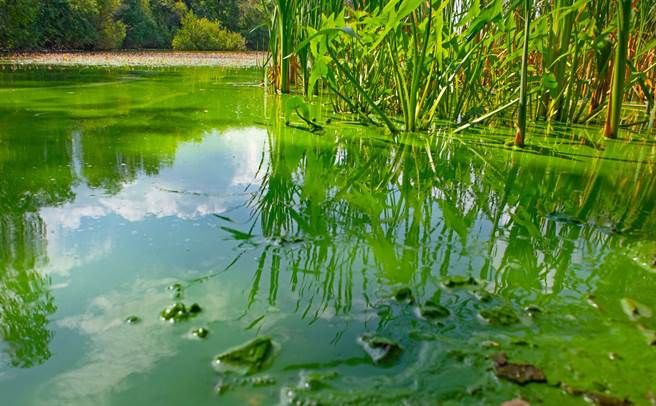Whether there is native life on Mars is still a subject of continuous research, but in all fairness, this dusty red planet is indeed difficult to survive. However, new experiments show that the oldest blue-green bacteria (cyanobacteria, also known as blue-green algae) on Earth can successfully grow under Martian atmospheric conditions. Perhaps, if we want to migrate to Mars in the future, the first step is to use blue-green bacteria to terraform Mars.
The science alert reported that among the inner planets, only Venus, Earth, and Mars are in the habitable zone, which is the area where there may be living things. However, Venus became super hot due to the super high greenhouse effect hundreds of millions of years ago, and the rotation speed of Venus is extremely slow due to unknown reasons, so there is almost no possibility of transformation. Mars is far away, coupled with its small size and low gravity, leaving only carbon dioxide in the atmosphere, so Mars appears dead.
But in contrast, Mars is still a planet that is more likely to transform into a habitable environment. Therefore, for many years, scientists have been considering sending photosynthetic oxygen-generating organisms on Earth to convert Mars’ carbon dioxide into oxygen and blue-green bacteria. It is the oldest and simplest photosynthetic organism.
The blue-green bacteria on the earth appeared 3.6 billion years ago and are one of the oldest organisms. Paleontologists believe that blue-green bacteria have played a big role in why the Earth’s atmosphere has become what it is today.
However, the atmospheric environment of Mars is very similar to that of the earth. Its atmosphere is too thin, only 1% of the earth’s atmospheric pressure. Therefore, it is difficult for liquid water to flow on the surface of Mars. When the pressure is too low, liquid water cannot exist effectively. , The ice cubes will directly sublimate into gas. In this extremely harsh situation, can blue-green bacteria survive and expand?
In this regard, the team led by Cyprien Verseux, an astrobiologist at the University of Bremen, Germany, will use experiments to understand whether blue-green bacteria can exist in the Martian environment. They developed a biological experimenter called Atmos, whose atmospheric pressure was adjusted to 10% of the earth’s pressure, which is the atmospheric pressure on Mars, and then adjusted the opposite of the gas, but they first chose a formula that is opposite to the Martian atmosphere. , The nitrogen content is 96%, and the carbon dioxide content is 4%. (The real Martian atmospheric formula is: 96% carbon dioxide and 4% nitrogen)
The biological experiment device also added some water, which simulates the melting of ice on Mars, and there is also soil composed of Martian feldspar, which is the composition of Martian soil learned by the Mars probe in the laboratory. The experiment established 9 to test which blue-green bacteria are most likely to survive on Mars.
The research team first selected a blue-green bacteria (Anabaena sp., PCC 7938) that can fix nitrogen. Preliminary tests showed that they are most likely to survive.
Dr. Vance said: “Under this low-pressure environment, blue-green bacteria can still use the scarce water in the Martian soil for photosynthesis, and its by-products can be used to feed other microorganisms. This is a good start.”
Although the previous paragraph once praised blue-green bacteria for transforming the earth’s atmosphere, blue-green bacteria do not always act as friendly basic organisms. In fact, the by-products of some blue-green bacteria are powerful biological toxins that can poison others in the water body. Living things, this kind of situation is called “algal bloom”, which is terrible water pollution.
However, in the initial stage of environmental transformation, blue-green bacteria are still important.
Scientists have discovered that blue-green bacteria such as Anabaena can grow rapidly under the weak pressure of Mars. So next, in order to evaluate whether the blue-green bacteria growing under Martian conditions continue to be useful, the researchers will put E. coli into this environment. If E. coli can symbiotically, it means that they can obtain sugar and amino acids from the blue-green bacteria. And other nutrients.
However, as mentioned above, the simulated Martian atmosphere installed in the current biological experimenter Atmos is not a real Martian atmosphere formula. It only proves that blue-green bacteria can survive in thin air, especially Anabaena algae has nitrogen-fixing properties. , But there is not so much nitrogen in the Martian atmosphere.
However, Dr. Vance is still optimistic that the blue-green bacteria currently selected may not be the best species. They will continue other experiments to understand whether the blue-green bacteria can establish the initial ecological environment on Mars.
(Zhongshi News Network)
– .

![[국제]Japan, starting today, vaccination… anxious start over insufficient preparation [국제]Japan, starting today, vaccination… anxious start over insufficient preparation](https://image.ytn.co.kr/general/jpg/2021/0217/202102170004267223_t.jpg)
